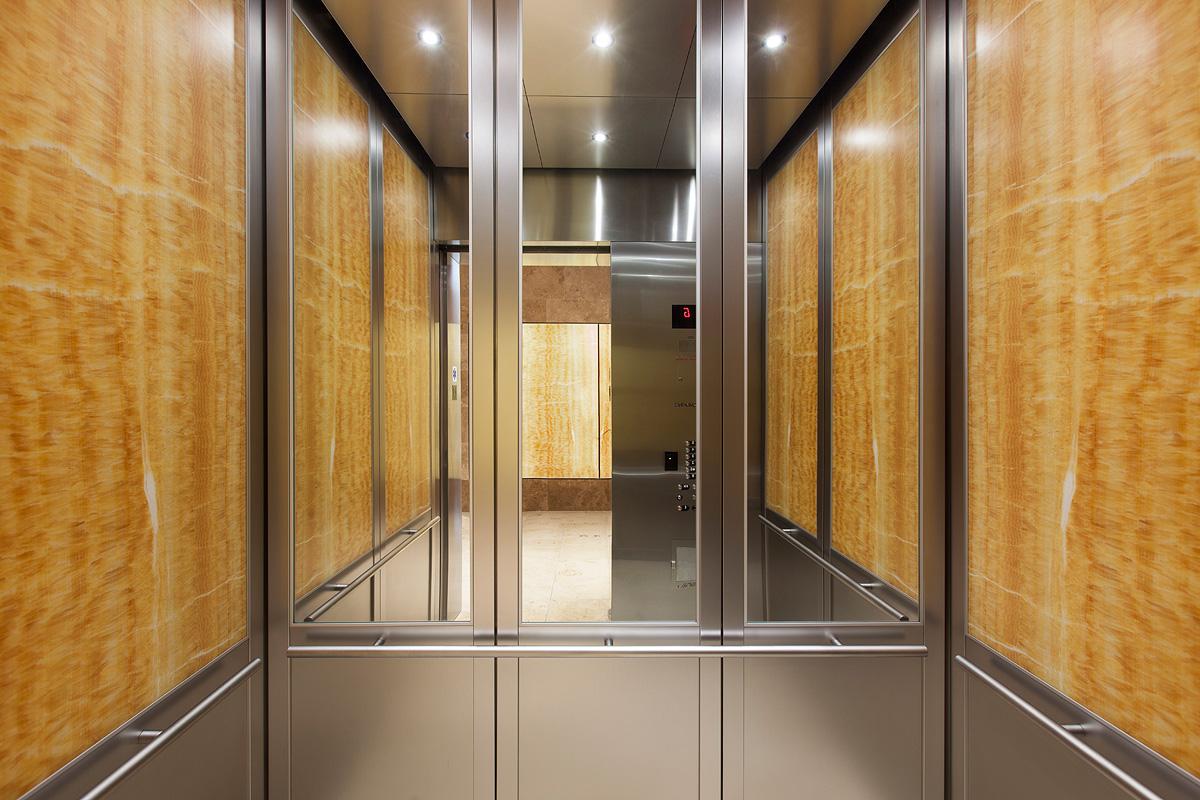

Articles
Why Are There Mirrors In Elevators
Modified: January 19, 2024
Discover why mirrors are commonly found in elevators and how they serve a practical and psychological purpose. Explore more in our insightful articles.
(Many of the links in this article redirect to a specific reviewed product. Your purchase of these products through affiliate links helps to generate commission for Storables.com, at no extra cost. Learn more)
Introduction
Elevators have become an integral part of our daily lives, transporting us effortlessly between different floors of buildings. While the main purpose of elevators is to provide vertical transportation, have you ever wondered why there are mirrors inside them? It may seem like a simple addition, but the presence of mirrors in elevators serves more than just the purpose of checking your appearance before stepping out. In this article, we will explore the origins, psychological effects, practical reasons, and future implications of mirrors in elevators.
Key Takeaways:
- Elevators mirrors serve more than just reflecting appearances. They enhance space perception, boost self-awareness, reduce boredom, and contribute to safety and security, creating a more enjoyable and comfortable elevator experience for passengers.
- Mirrors in elevators have a rich history and a multitude of practical and psychological benefits. They play a significant role in shaping passengers’ emotions and behaviors, while also offering potential for innovative changes in the future.
Read more: Why Are Mirrors Inverted
The Origins of Mirrors in Elevators
The installation of mirrors in elevators can be traced back to the early 20th century when elevators started to become a common feature in tall buildings. It was believed that mirrors could alleviate the discomfort and unease people often felt when confined in a small, enclosed space for a brief period of time. By providing a distraction and a connection to the outside world, mirrors created a sense of openness and reduced the feeling of being trapped.
Another reason for the introduction of mirrors in elevators was to address the problem of elevator-related accidents. In the early days, elevator doors were often made of solid materials, which made it difficult to see if someone was on the other side. Mirrors were strategically placed in elevators to provide a visual aid, allowing passengers to see if someone was exiting or entering the elevator, thereby preventing accidents and collisions.
As urbanization and the construction of skyscrapers became more prevalent, the psychological and practical benefits of mirrors in elevators became even more apparent. Mirrors were not only functional but also served as an aesthetic element, adding a touch of elegance and sophistication to elevator interiors. This integration of functionality and aesthetics led to the widespread adoption of mirrors in elevators across the world.
Psychological Effects of Mirrors in Elevators
The presence of mirrors in elevators has a profound psychological impact on passengers. While many may consider it a simple addition to the elevator’s interior, mirrors play a significant role in shaping people’s perceptions and emotions during the short journey.
One of the primary psychological effects of mirrors in elevators is the enhancement of space perception. The reflective surfaces create an illusion of a larger space, making the elevator feel more open and less claustrophobic. This can be particularly beneficial for individuals who experience anxiety or discomfort in confined spaces, as the mirrors create the illusion of a larger, more expansive environment.
Moreover, mirrors in elevators enhance self-awareness and encourage individuals to present themselves in a more presentable manner. When passengers catch a glimpse of themselves in the mirrors, they often adjust their appearance, fixing their hair, straightening their clothes, or checking their makeup. This self-awareness fosters a sense of confidence and contributes to a positive self-perception during the elevator ride.
In addition to boosting self-awareness, mirrors in elevators serve as a source of entertainment and distraction. They provide a diversion from the monotony of the elevator ride, allowing passengers to observe their surroundings, people-watch, or engage in a quick self-reflection. This can help alleviate boredom and reduce stress or anxiety, especially in situations where passengers are waiting for their desired floor or in crowded elevators.
Interestingly, mirrors in elevators also give rise to superstitions and cultural beliefs. In some cultures, it is believed that breaking a mirror brings bad luck or seven years of misfortune. This belief can create a sense of unease for individuals who are superstitious, leading them to avoid looking into the mirrors or even requesting that the mirrors be covered or removed from the elevator.
Overall, the psychological effects of mirrors in elevators contribute to a more enjoyable and comfortable elevator experience. From creating a perception of spaciousness to encouraging self-awareness and providing a source of entertainment, mirrors play a significant role in shaping passengers’ emotions and behaviors during their brief rides.
Enhanced Perception of Space
One of the significant psychological effects of mirrors in elevators is the enhanced perception of space. The reflective surface of the mirrors creates an illusion of a larger and more expansive environment, making the elevator appear less confined and claustrophobic.
When passengers step into an elevator, especially in smaller or older models, the limited physical space can sometimes feel suffocating or uncomfortable. However, the presence of mirrors strategically placed on the walls can counteract these feelings by tricking the mind into perceiving a more open and spacious environment.
Mirrors in elevators create the illusion that there is more room than there actually is, making passengers feel less confined. This can be particularly beneficial for individuals who experience claustrophobia or anxiety in cramped spaces. The perception of a larger space helps to alleviate the feeling of being trapped and allows passengers to feel more at ease during their elevator journey.
The enhanced perception of space also has a positive impact on overall passenger comfort. When people feel like they have more room to move, they are more likely to experience a sense of freedom and relaxation. This can contribute to a more pleasant elevator experience and help individuals maintain a calm and composed demeanor.
Furthermore, the enhanced perception of space can have practical implications in terms of crowd management. In crowded elevators, the mirror’s reflection can create the illusion of more space between individuals, reducing the perceived density and potentially easing any discomfort or anxiety caused by close proximity to others.
In modern architectural design, mirrors are often strategically placed to optimize the visual effect of a larger space. By strategically positioning mirrors in elevators, architects can create a harmonious and visually appealing atmosphere that enhances the overall aesthetic of the building while simultaneously enhancing the perception of space.
In summary, the presence of mirrors in elevators significantly enhances the perception of space. By creating an illusion of a larger and more open environment, mirrors alleviate feelings of confinement and claustrophobia. This enhanced perception of space contributes to passenger comfort and can have practical implications in terms of crowd management. Whether consciously or subconsciously, the enhanced perception of space positively influences the overall elevator experience for passengers.
Improved Self-Awareness and Appearance
Mirrors in elevators serve a practical purpose beyond just reflecting one’s image—they enhance self-awareness and improve passengers’ appearance. When entering an elevator, individuals catch a glimpse of themselves in the mirrors, and this often prompts them to make adjustments to their appearance.
The presence of mirrors allows passengers to quickly assess their hair, clothing, and overall appearance. It serves as a gentle reminder to make any necessary adjustments before reaching their desired floor. Whether it’s fixing a stray hair, straightening a tie, or adjusting makeup, the mirrors provide an opportunity for individuals to present themselves in the best possible way.
This self-awareness created by mirrors fosters a sense of confidence during the elevator ride. When people feel that they look their best, they tend to have more positive interactions with others and carry themselves with greater self-assurance. It can boost their mood and contribute to a more positive overall experience.
In addition to personal appearance, mirrors in elevators also play a role in improving body language awareness. People often unconsciously adjust their stance, posture, and facial expressions when they spot their reflection. This self-reflection allows individuals to make small tweaks to improve their body language, presenting themselves in a more confident and approachable manner.
Moreover, the presence of mirrors in elevators contributes to a self-grooming culture. Individuals become conscious of their appearance not only for themselves but also for the presence of others in the elevator. The mirrors act as a reminder to be mindful of their grooming habits and instill a sense of responsibility in maintaining a neat and presentable appearance.
Overall, mirrors in elevators enhance self-awareness and improve passengers’ appearance. By providing a quick opportunity to assess and adjust one’s appearance, mirrors contribute to an increased sense of confidence and a more positive self-perception. This improved self-awareness not only benefits individuals but also influences the overall social atmosphere within the elevator, creating a more pleasant and presentable environment for everyone.
Read more: Why Are Mirrors Green
Reduction of Boredom and Anxiety
Mirrors in elevators serve as more than just a reflection of one’s appearance—they also play a role in reducing boredom and anxiety during elevator rides. The presence of mirrors provides a source of entertainment and distraction, making the journey more enjoyable for passengers.
Elevator rides, especially in taller buildings, can often seem long and monotonous. However, with mirrors, passengers have the opportunity to observe their surroundings and engage in people-watching. The reflective surfaces not only allow individuals to see themselves but also provide a glimpse into the actions and reactions of other passengers. This can be particularly fascinating in crowded elevators, where a variety of interactions and expressions can be observed.
Furthermore, mirrors in elevators allow for brief moments of self-reflection. Passengers can take a moment to contemplate their thoughts or assess their emotions as they catch a glimpse of themselves in the mirrors. This self-reflection can be a valuable opportunity for relaxation and self-awareness, helping to reduce anxiety or stress that may arise from the hustle and bustle of daily life.
In situations where passengers are waiting for their desired floor, mirrors provide a distraction from the anticipation and waiting. By observing their surroundings and their own reflections, passengers can take their minds off the perceived slowness of the elevator and focus on something more engaging. This can help to alleviate boredom and create a more positive experience during the ride.
Research has shown that visual distractions, such as mirrors, can significantly reduce levels of anxiety and apprehension in enclosed spaces. The presence of mirrors in elevators creates a sense of openness and connection to the outside world, alleviating the feeling of being trapped and reducing anxiety levels for those who may experience claustrophobia or discomfort in confined spaces.
Overall, the inclusion of mirrors in elevators serves as a means of reducing boredom and anxiety during elevator rides. By providing a source of entertainment, a distraction from waiting, and a sense of connection to the outside world, mirrors enhance the overall experience and contribute to a more pleasant and enjoyable elevator journey for passengers.
Superstitions and Cultural Beliefs Surrounding Mirrors in Elevators
Mirrors in elevators not only serve practical and psychological purposes, but they also give rise to various superstitions and cultural beliefs. Different cultures and individuals hold beliefs regarding the use of mirrors, which can impact their behavior and perception when encountering mirrors in elevators.
One common superstition associated with mirrors is the belief that breaking a mirror brings seven years of bad luck. This belief is rooted in ancient folklore and has been passed down through generations. As a result, some individuals may feel uneasy or anxious when confronted with mirrors, especially in enclosed spaces like elevators. They may even go as far as avoiding looking into the mirrors or requesting that they be covered or removed from the elevator altogether.
In certain cultures, mirrors are believed to have the power to reflect and capture one’s soul. This belief creates a sense of vulnerability when seeing their own reflection, as some believe that it can lead to the soul being trapped or the individual being cursed. Consequently, individuals may choose to avoid looking directly at their reflection while in an elevator, as it is seen as an intrusion on one’s inner self.
On the other hand, mirrors in elevators can also be perceived as symbols of vanity and self-obsession. In some cultures, excessive self-admiration or preoccupation with one’s appearance is frowned upon. Therefore, individuals who hold this belief may choose to ignore their reflection in the mirrors or even actively avoid elevators with mirrors to distance themselves from these perceived negative traits.
It’s important to note that these superstitions and cultural beliefs surrounding mirrors in elevators are purely subjective and vary from person to person or culture to culture. While some may embrace and appreciate the practical and psychological benefits of mirrors in elevators, others may be influenced by deep-rooted beliefs that shape their perception and behavior in the presence of mirrors.
Overall, the superstitions and cultural beliefs surrounding mirrors in elevators highlight the diverse interpretations and associations people have with these reflective surfaces. Whether it’s fear of bad luck, concerns about the reflection of the soul, or the perception of vanity, these beliefs contribute to the complex relationship individuals and cultures have with mirrors in elevators.
Mirrors in elevators create an illusion of a larger space, helping to reduce feelings of claustrophobia and making the ride more comfortable for passengers.
Practical Reasons for Mirrors in Elevators
While mirrors in elevators serve psychological and cultural purposes, they also have several practical reasons for their inclusion in elevator design. These practical considerations enhance safety, security, and maintenance of the elevator system.
One of the primary practical reasons for mirrors in elevators is related to safety. In the past, elevator doors were often made of solid materials, making it difficult to see if someone was on the other side. By strategically placing mirrors in elevators, passengers and elevator operators have a clear line of sight, allowing them to see if someone is entering or exiting the elevator. This visual aid helps prevent accidents, such as closing the doors on someone or trapping a person between the doors.
In terms of security, mirrors in elevators can serve as a deterrent for misconduct or vandalism. The presence of mirrors acts as a form of surveillance, making individuals aware that their actions are being observed. This can discourage inappropriate behavior, as people are less likely to engage in misconduct when they know they are being watched. Additionally, mirrors can assist in identifying suspicious or unauthorized individuals within the elevator, enhancing overall security measures.
The practicality of mirrors in elevators extends to cleaning and maintenance considerations. Mirrors are relatively easy to clean and maintain, as they can be wiped down with a cloth or glass cleaner to remove smudges, fingerprints, or other marks. This ensures that the mirrors remain clear and reflective, presenting a clean and pleasing aesthetic to passengers. Additionally, mirrors can help mask any minor imperfections or scratches on the elevator walls, thereby reducing maintenance requirements and costs.
Moreover, the reflective surfaces of mirrors in elevators can serve practical purposes during emergencies. In the event of a power outage or elevator malfunction, mirrors can help passengers signal for assistance by reflecting light from external sources, such as emergency lights or cell phones. This can aid rescue personnel in locating and identifying the elevator that requires assistance.
Overall, the inclusion of mirrors in elevators has practical benefits that contribute to the safety, security, maintenance, and emergency responsiveness of the elevator system. From providing clear visibility and surveillance to facilitating easy cleaning and maintenance, mirrors play a vital role in ensuring the smooth operation and upkeep of elevators.
Safety and Security Enhancements
Mirrors in elevators offer significant safety and security enhancements, making them an essential feature of modern elevator design. These reflective surfaces serve as practical tools to enhance passenger safety and provide additional security measures within elevator systems.
One of the primary safety enhancements provided by mirrors in elevators is improved visibility. By strategically placing mirrors in elevators, passengers and elevator operators have an unobstructed view of the elevator car, including all entrances and exits. This visibility ensures that everyone can see if someone is entering or exiting the elevator, thereby reducing the risk of accidents or injuries caused by closing doors on passengers.
Additionally, mirrors in elevators act as a form of security surveillance. The reflective surfaces create a sense of being observed, making individuals more conscious of their behavior. This discourages misconduct or vandalism within the elevator, as people are less likely to engage in inappropriate behavior when they know they are being watched. The presence of mirrors can also assist with identifying suspicious individuals, enhancing overall security measures.
Mirrors can also improve personal safety within elevators. Passengers can use the reflective surfaces to assess their surroundings and be aware of who is entering or exiting the elevator. This allows for extra caution, especially in unfamiliar or potentially unsafe environments. The reflective surfaces provided by mirrors act as an added layer of situational awareness, contributing to the overall safety and security of elevator passengers.
In emergency situations, mirrors in elevators can also play a crucial role in enhancing safety and security. The reflective surfaces can serve as a means of communication and signaling for assistance. For example, if passengers become trapped or experience a power outage, they can use the mirrors to reflect light from external sources, such as emergency lights or cell phones. This reflective signal can assist rescue personnel in locating the elevator and expediting the rescue process.
Furthermore, mirrors in elevators can aid in prompt emergency response by providing real-time visual feedback to elevator operators or security personnel. In the event of an incident or security breach, the presence of mirrors allows for immediate visual confirmation, improving response times and facilitating efficient emergency protocols.
In summary, mirrors in elevators offer safety and security enhancements by improving visibility, acting as a form of security surveillance, enhancing personal safety, and aiding in emergency response. The reflective surfaces provided by mirrors contribute to a safer and more secure environment for elevator passengers, ensuring their well-being and peace of mind during their elevator journeys.
Read more: Why Magnifying Mirrors Are Bad
Monitoring and Surveillance Purposes
Mirrors in elevators serve monitoring and surveillance purposes, providing an additional layer of security and enhancing overall safety measures. The reflective surfaces of mirrors enable operators, security personnel, and building management to monitor elevator activity and ensure the well-being of passengers.
One of the key advantages of mirrors for monitoring purposes is the ability to observe the entire interior of the elevator. By strategically placing mirrors in elevators, operators and security personnel have a comprehensive view of the elevator car, allowing them to monitor passenger behavior and identify any suspicious or potentially dangerous situations.
The reflective surfaces of mirrors act as a deterrent to potential misconduct or vandalism within elevators. The awareness that they are being observed through the mirrors discourages individuals from engaging in inappropriate behavior, as they know their actions are being monitored. This can help maintain a safe and secure environment for all passengers.
Additionally, mirrors in elevators can be integrated with surveillance cameras to provide an enhanced monitoring system. By combining mirrors with CCTV cameras, operators and security personnel can have a real-time visual feed of the elevator interior, allowing for immediate response in the event of an emergency or security breach.
The monitoring and surveillance capabilities provided by mirrors in elevators can assist in crowd management, especially in crowded or high-traffic areas. Operators and security personnel can monitor the number of passengers entering and exiting the elevator to ensure safe occupancy levels. This monitoring can also help identify and address any issues related to overcrowding or congestion, ensuring the smooth flow of passenger traffic within the building.
Furthermore, mirrors in elevators can aid in the prevention and detection of unauthorized access or tampering. By providing a clear view of the entrances and exits, mirrors allow operators and security personnel to identify any individuals attempting to gain access to restricted areas or engage in suspicious activities. This proactive monitoring contributes to a secure environment and mitigates potential security threats.
Overall, mirrors in elevators serve as an integral component of monitoring and surveillance systems. The reflective surfaces enable operators, security personnel, and building management to observe and address any potential issues or concerns within the elevator. By combining mirrors with CCTV cameras and maintaining a vigilant monitoring approach, elevator systems can ensure the safety and security of passengers and proactively respond to any emergencies or security breaches that may arise.
Cleaning and Maintenance Considerations
Mirrors in elevators require regular cleaning and maintenance to ensure their effectiveness and visual appeal. Proper cleaning and maintenance of mirrors not only contribute to a pleasant aesthetic but also promote a safe and enjoyable environment for elevator passengers.
One of the primary considerations for cleaning mirrors in elevators is to maintain their reflective clarity. Mirrors can accumulate dust, fingerprints, smudges, and other marks over time, leading to a loss of their reflective properties. Regular cleaning with appropriate glass cleaners and non-abrasive materials is necessary to keep the mirrors clear and free from any obstruction that may compromise their functionality.
Cleaning mirrors in elevators involves using a gentle cleaning solution or glass cleaner sprayed onto a lint-free microfiber cloth. The cloth should be lightly dampened, not soaked, to avoid any potential damage to the mirrors or the surrounding elevator components. The mirrors should be gently wiped in a circular motion to remove any dirt or marks on the surface, ensuring a streak-free finish.
In addition to routine cleaning, routine inspections should be conducted to identify any damages or issues with the mirrors. Scratches, cracks, or other impairments should be addressed promptly to maintain the functionality and appearance of the mirrors. If any significant damages are identified, professional repair or replacement may be necessary to ensure the mirrors continue to serve their intended purpose.
Maintenance consideration for mirrors in elevators also includes keeping the surrounding areas clean and unobstructed. Proper housekeeping practices should be followed to prevent dirt, debris, or objects from accumulating near the mirrors. Regular maintenance of the elevator itself, including cleaning the elevator car and monitoring the integrity of the surrounding materials, helps to maintain the overall cleanliness and functionality of the mirrors.
Moreover, it is essential to consider the safety aspect of cleaning and maintenance procedures. Adequate precautions should be taken to ensure the safety of maintenance personnel and elevator passengers during the cleaning process. This may involve using appropriate equipment, such as ladders or scaffolding, and following best practices for working in an elevator environment.
Overall, cleaning and maintenance considerations are crucial for maintaining the functionality, visual appeal, and safety of mirrors in elevators. Regular cleaning, routine inspections, and proper housekeeping practices contribute to the longevity and effectiveness of the mirrors, providing passengers with a pleasant and clear reflection during their elevator journeys.
The Future of Mirrors in Elevators
As technology continues to advance and design concepts evolve, the future of mirrors in elevators is likely to see innovative changes and enhancements. While mirrors have been a staple in elevator design for decades, emerging trends and advancements may shape their role and functionality in the years to come.
One potential direction for the future of mirrors in elevators is the integration of smart technology. Mirrors could be equipped with touch-sensitive functionalities, allowing passengers to access information or control elevator features through interactive displays. This could include features like displaying real-time news updates, weather forecasts, or even personalized greetings upon entering the elevator. The incorporation of smart technology into mirrors would provide a more interactive and personalized experience for passengers during their elevator rides.
Another area of development in mirror technology is the integration of augmented reality (AR) or virtual reality (VR) capabilities. Mirrors could be designed to overlay additional information or visual enhancements in real-time, transforming the elevator ride into an immersive experience. For example, passengers could view virtual landscapes or architectural designs while traveling between floors, providing a unique and engaging experience within the confined space of the elevator.
Furthermore, advancements in materials and manufacturing techniques may lead to the development of more innovative mirror designs. Mirrors could be created using flexible or bendable materials, allowing for curved or unconventional shapes to be incorporated into elevator interiors. This not only adds a visually striking element but also enhances the overall aesthetics and design possibilities of elevator spaces.
In terms of functionality, mirrors could also be equipped with additional features such as built-in lighting or heating elements. Integrated LED lighting systems could enhance the visibility and appearance of the mirrors, while heated mirrors could prevent condensation or fogging, especially in humid environments or during temperature changes. These enhanced functionalities would contribute to a more seamless and practical use of mirrors in elevators.
From a sustainability perspective, mirrors in elevators could be designed with eco-friendly materials and energy-efficient technologies. For instance, the use of low-energy LED lighting or solar-powered mirror systems could reduce electricity consumption, making elevators more environmentally friendly without compromising on functionality or visual appeal.
Ultimately, as technology and design continue to evolve, the future of mirrors in elevators holds the potential for exciting and transformative changes. Whether through the integration of smart technology, augmented reality features, innovative designs, enhanced functionalities, or sustainable materials, mirrors are likely to continue playing a significant role in elevators while adapting to meet the needs and preferences of the future elevator passengers.
Conclusion
Mirrors in elevators serve a multitude of purposes beyond just reflecting one’s appearance. They have a rich history, originating from the need to create a sense of openness and alleviate discomfort in small, enclosed spaces. As mirrors became more prevalent in elevator design, their psychological effects and practical benefits became apparent.
Psychologically, mirrors in elevators enhance the perception of space, making the confined environment feel more open and reducing feelings of claustrophobia. They also improve self-awareness and appearance, prompting individuals to present themselves in the best possible way and fostering a sense of confidence during the elevator ride. Additionally, mirrors provide a source of entertainment, reducing boredom and anxiety by allowing passengers to observe their surroundings and engage in self-reflection.
Mirrors in elevators also have practical applications. They improve safety and security by providing clear visibility, enabling passengers to see if someone is entering or exiting the elevator and making operators aware of any potential accidents or suspicious activity. Mirrors also facilitate cleaning and maintenance, being easy to clean and allowing for quick inspection of damages. Furthermore, they can aid in emergencies by providing reflective signals and assisting rescue personnel in locating the elevator.
The cultural beliefs and superstitions surrounding mirrors in elevators further demonstrate the complex relationship individuals and cultures have with these reflective surfaces. Some view mirrors with caution or superstitious beliefs, while others appreciate their practical and psychological benefits.
Looking to the future, mirrors in elevators may see innovative changes, such as the integration of smart technology or augmented reality features. Advancements in materials and manufacturing techniques may also lead to more innovative designs and enhanced functionalities. Sustainability considerations will likely play a role, with eco-friendly materials and energy-efficient technologies being incorporated.
In conclusion, mirrors in elevators are more than just a functional addition. They have a profound psychological impact, enhance safety and security, and provide aesthetic and practical benefits. Whether for the perception of space, self-awareness, entertainment, or monitoring, mirrors contribute to a more enjoyable and comfortable elevator experience. As technology evolves, mirrors will continue to adapt and innovate, shaping the future of elevator design and enhancing the journey for passengers around the world.
Frequently Asked Questions about Why Are There Mirrors In Elevators
Was this page helpful?
At Storables.com, we guarantee accurate and reliable information. Our content, validated by Expert Board Contributors, is crafted following stringent Editorial Policies. We're committed to providing you with well-researched, expert-backed insights for all your informational needs.
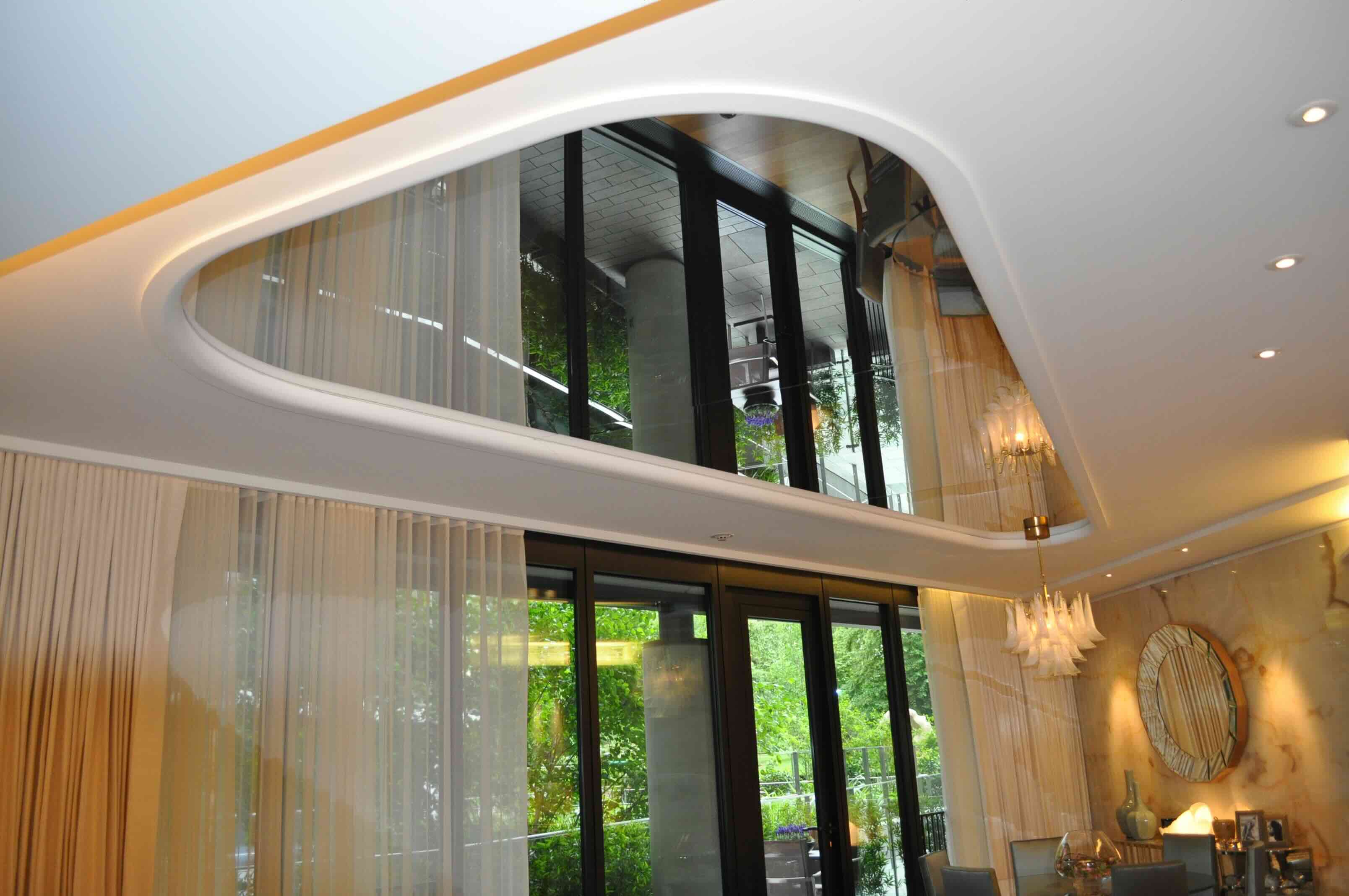
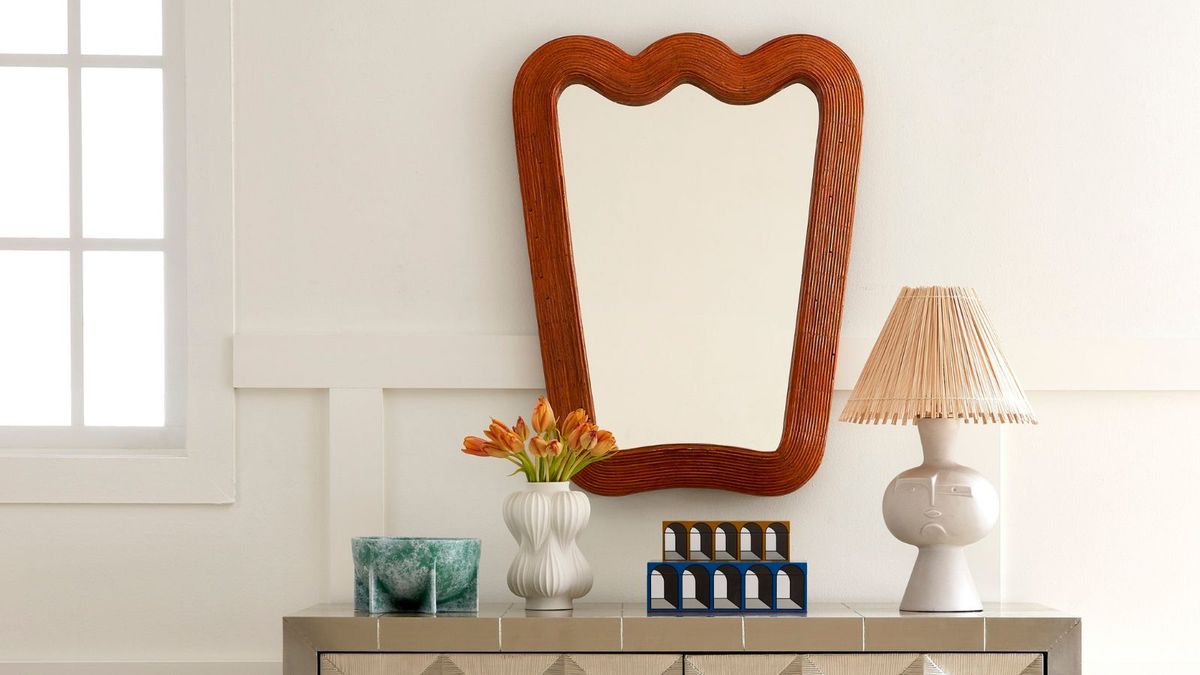

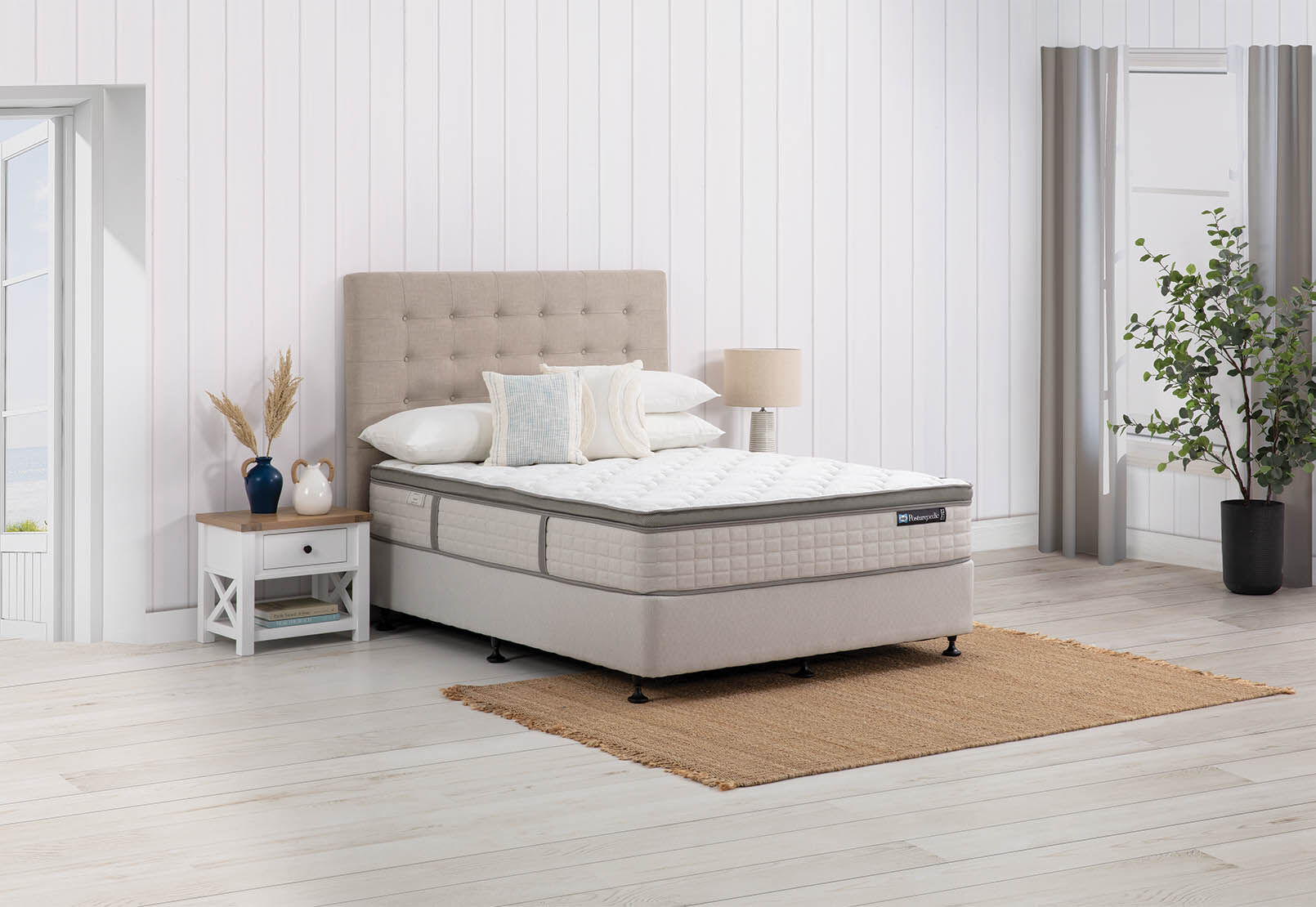

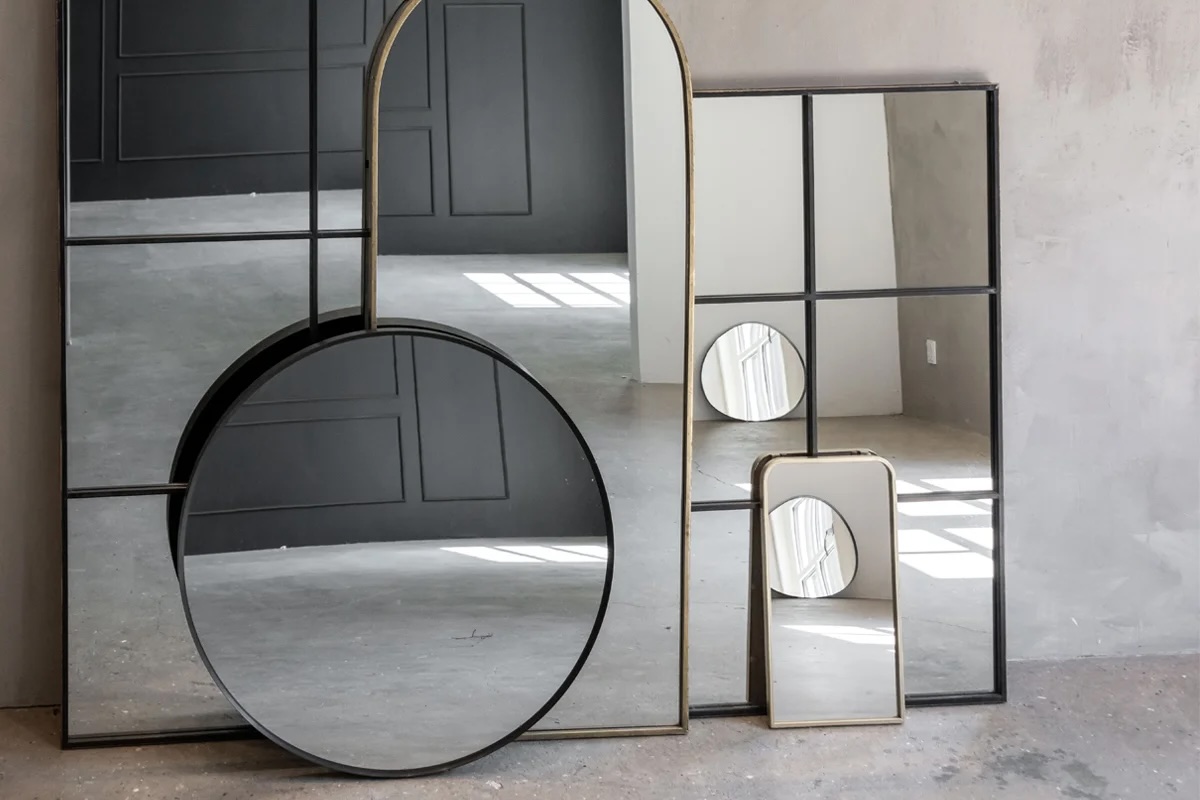

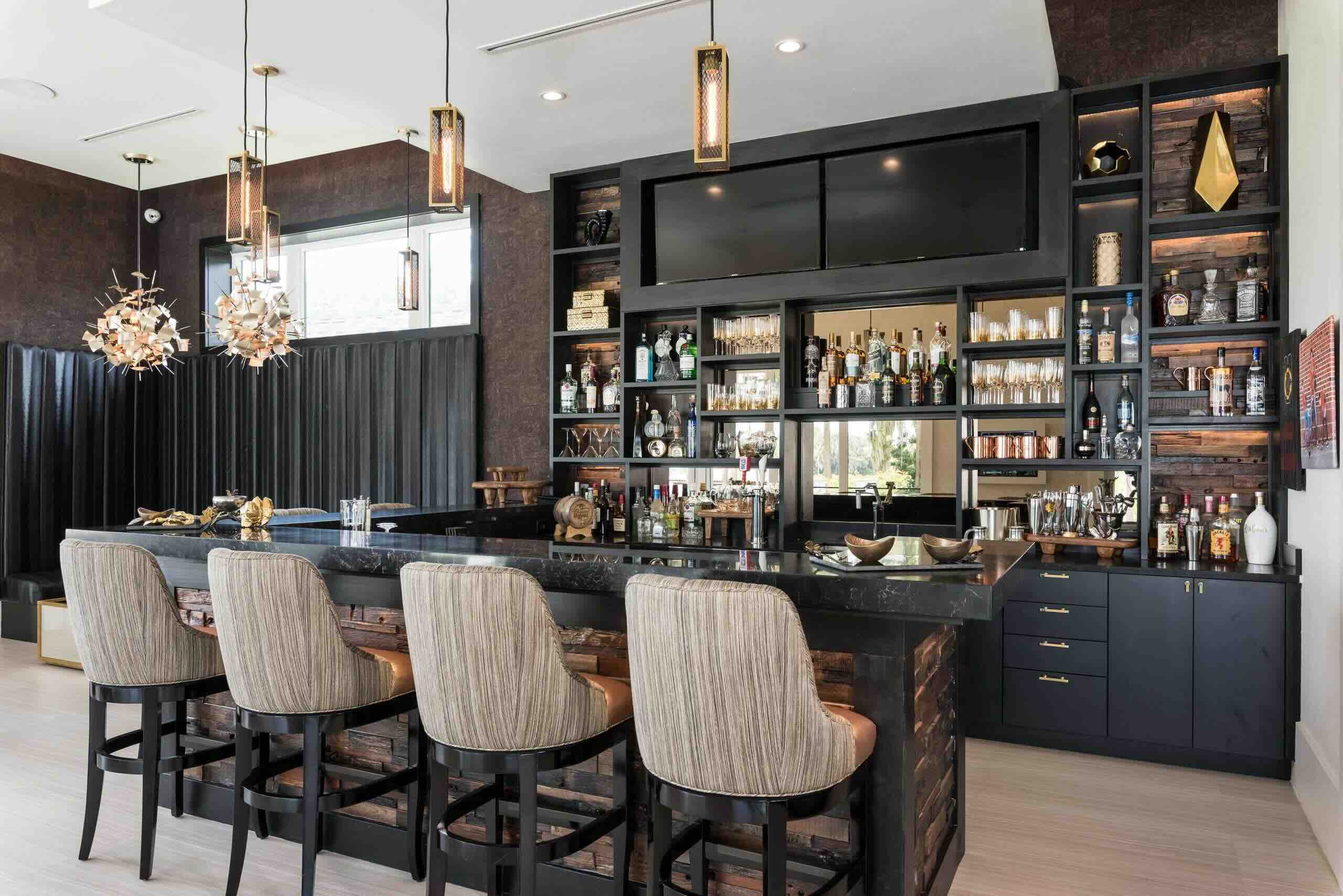

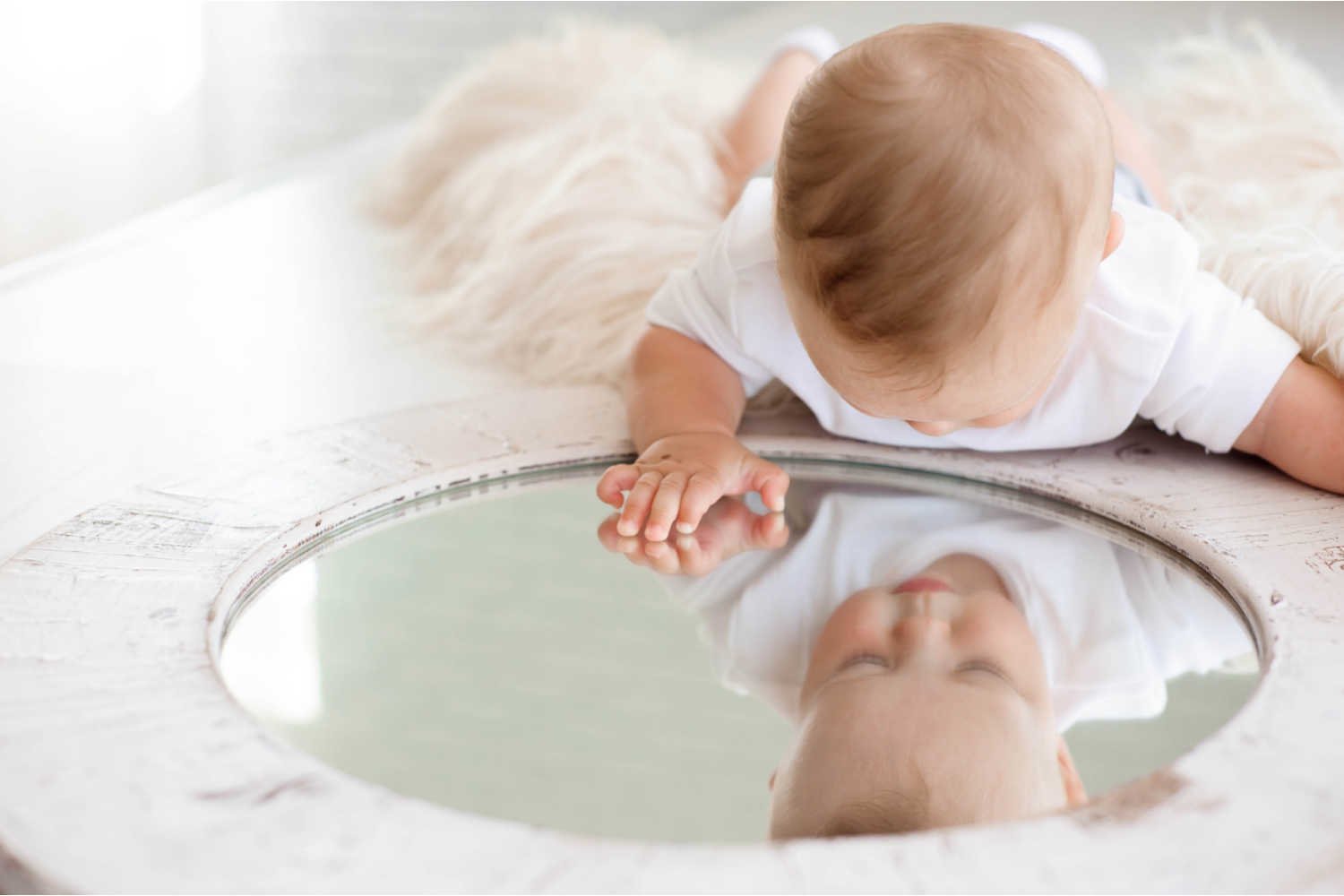




0 thoughts on “Why Are There Mirrors In Elevators”